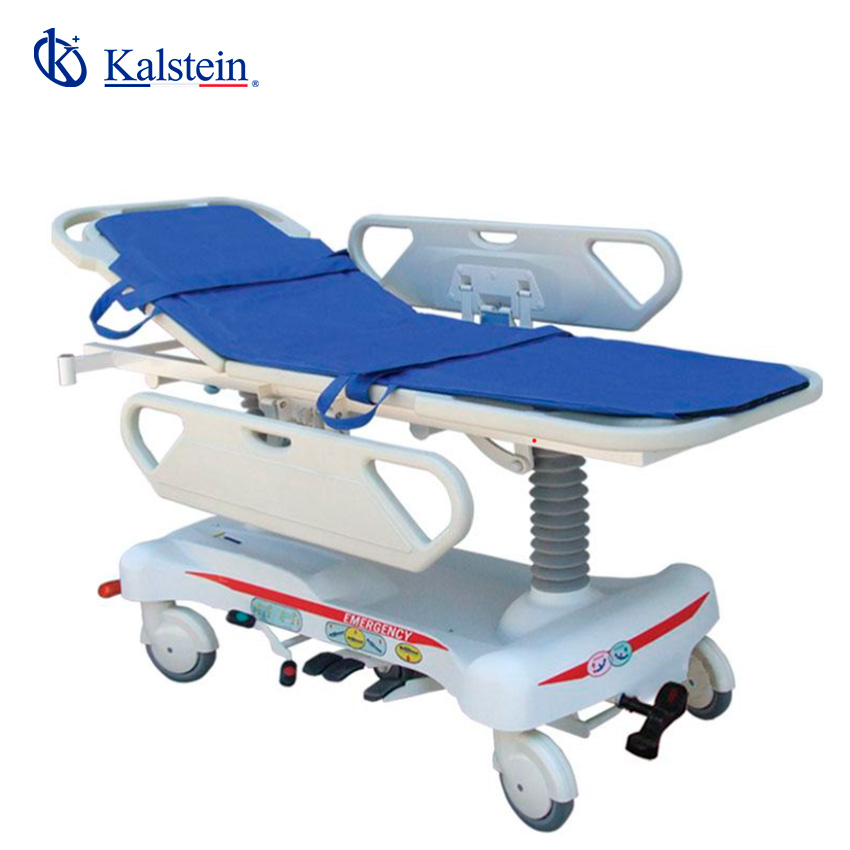A transfer stretcher is an essential piece of equipment in any medical setting. Its design, functionality, and durability are crucial for improving laboratory efficiency and patient care.
In this article, we will compare the Two-Function Manual ABS Transfer Stretcher from Kalstein with other leading models on the market, highlighting their advantages and disadvantages.
We understand that you need equipment that delivers maximum value to your laboratory. We invite you to visit https://kalstein.co.in/category-product/medical-line/medical-transfer-stretcher/, to immerse yourself in our universe of cutting-edge technology equipment. Our prices are competitive and accessible, we combine the convenience of online shopping with the guarantee of an exceptional product. Because you deserve the best, we create and offer top-tier laboratory equipment. Make your choice today, where science comes to life. https://kalstein.co.in/
Kalstein vs. Stryker: Robustness and Durability
Kalstein: The Kalstein Manual ABS Transfer Stretcher is designed with high-strength materials, offering notable durability. Its ABS structure ensures a prolonged lifespan, resisting wear and impacts in a hospital environment.
Stryker: On the other hand, Stryker offers a robust transfer stretcher with a focus on ergonomics. Its high-quality materials also ensure excellent durability, although they tend to be heavier due to their metallic construction.
Advantages: Kalstein: Lightweight and impact-resistant. Stryker: Greater ergonomics and comfort for medical staff.
Disadvantages: Kalstein: May be less comfortable for prolonged use. Stryker: Heavier, making transport more difficult.
Kalstein vs. Hill-Rom: Ease of Use and Maintenance
Kalstein: Kalstein stands out for its intuitive and easy-to-handle design. The Manual ABS Transfer Stretcher is simple to operate, reducing the training time required for medical staff. Additionally, maintenance is minimal due to the quality of materials used.
Hill-Rom: Hill-Rom, known for its innovation, offers a stretcher that incorporates advanced technology to facilitate its use. However, this technology may require more specialized and frequent maintenance.
Advantages: Kalstein: Intuitive operation and low maintenance. Hill-Rom: Technological innovations that ease use.
Disadvantages: Kalstein: Fewer advanced technological features. Hill-Rom: Requires specialized maintenance.
Kalstein vs. Medline: Quality-Price Ratio
Kalstein: One of Kalstein’s strengths is its quality-price ratio. The Manual ABS Transfer Stretcher offers excellent functionality and durability at a competitive cost, making it accessible to a wide range of medical institutions.
Medline: Medline also offers high-quality products, but generally at a higher price. Their stretchers often come equipped with additional features that justify the cost but may not be necessary for all users.
Advantages: Kalstein: Excellent quality-price ratio. Medline: Additional equipment and premium features.
Disadvantages: Kalstein: Fewer premium features. Medline: Higher price.
Kalstein vs. Invacare: Patient Safety and Comfort
Kalstein: Kalstein’s stretcher ensures patient safety with its stable and robust design. It also provides adequate comfort for short transfers, which is essential to minimize patient stress and discomfort.
Invacare: Invacare places great emphasis on patient comfort, incorporating softer mattresses and designs that better distribute weight. This is ideal for patients requiring longer transfers or those with specific conditions needing greater care.
Advantages: Kalstein: Robust safety and adequate comfort. Invacare: Maximum patient comfort.
Disadvantages: Kalstein: Less focus on extreme comfort. Invacare: May be excessive for simple transfers.
Kalstein vs. Arjo: Flexibility and Adaptability
Kalstein: Kalstein offers a versatile transfer stretcher that can adapt to various clinical situations. Its design allows for quick and easy adjustments, providing flexibility for different types of transfers.
Arjo: Arjo specializes in highly adaptable equipment designed to meet specific needs, such as bariatric patients or those with very limited mobility. Their stretchers are highly configurable, although this can increase complexity.
Advantages: Kalstein: Versatility and ease of adjustment. Arjo: High adaptability to specific needs.
Disadvantages: Kalstein: Fewer specialized configurations. Arjo: Greater complexity in use.
Kalstein vs. Drive Medical: Innovation and Technology
Kalstein: Kalstein focuses on offering essential and efficient technology. The Manual ABS Transfer Stretcher incorporates necessary innovations to ensure optimal performance without unnecessary technological complications.
Drive Medical: Drive Medical is known for integrating advanced technology into its products, such as hydraulic and electric systems for height and angle adjustments. These innovations can improve functionality but also increase cost and maintenance needs.
Advantages: Kalstein: Essential and efficient technology. Drive Medical: Advanced innovations that enhance functionality.
Disadvantages: Kalstein: Fewer technological innovations. Drive Medical: Higher cost and maintenance.
Conclusion
Choosing the right transfer stretcher depends on the specific needs of the clinical setting. The Two-Function Manual ABS Transfer Stretcher from Kalstein offers an excellent combination of durability, ease of use, and quality-price ratio, making it a robust and accessible option for many institutions.
However, it is crucial to consider the additional features that other competitors may offer to ensure the best fit for the specific needs of each clinical environment.


